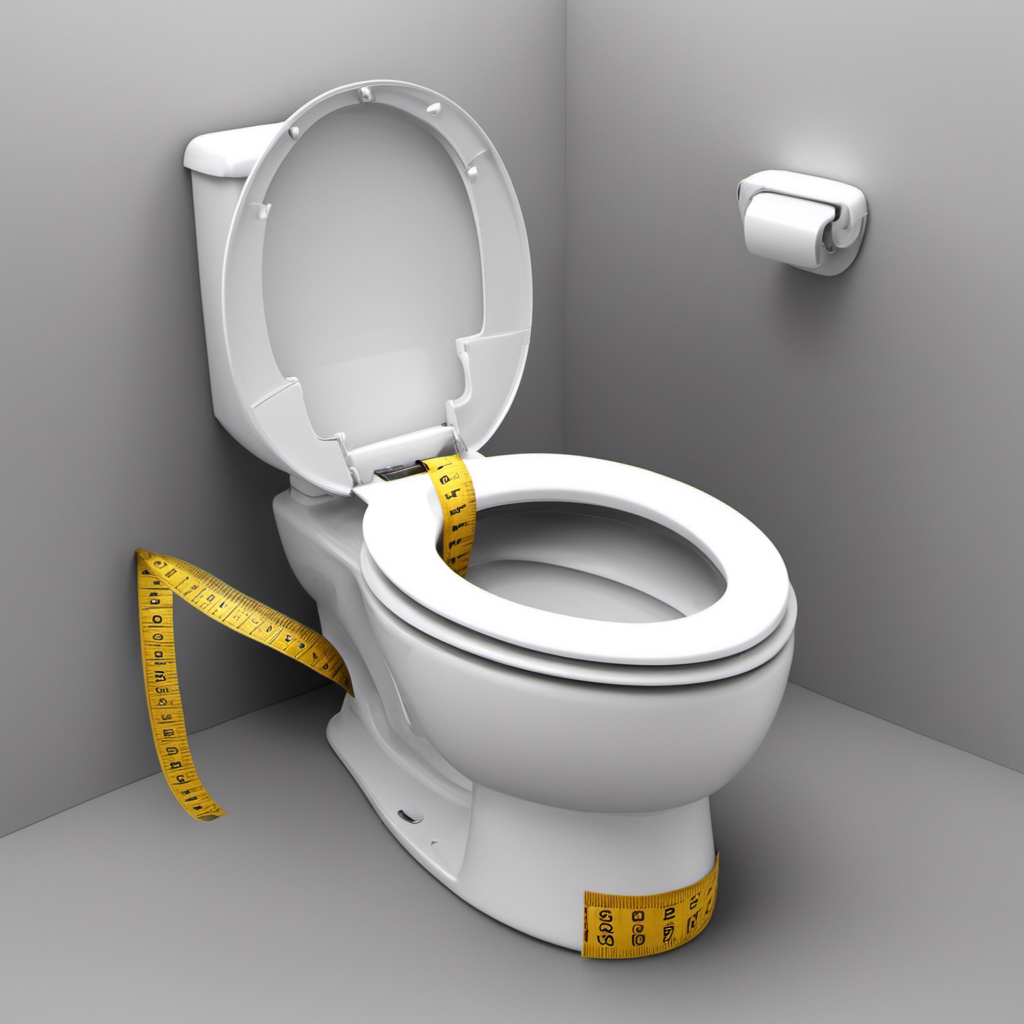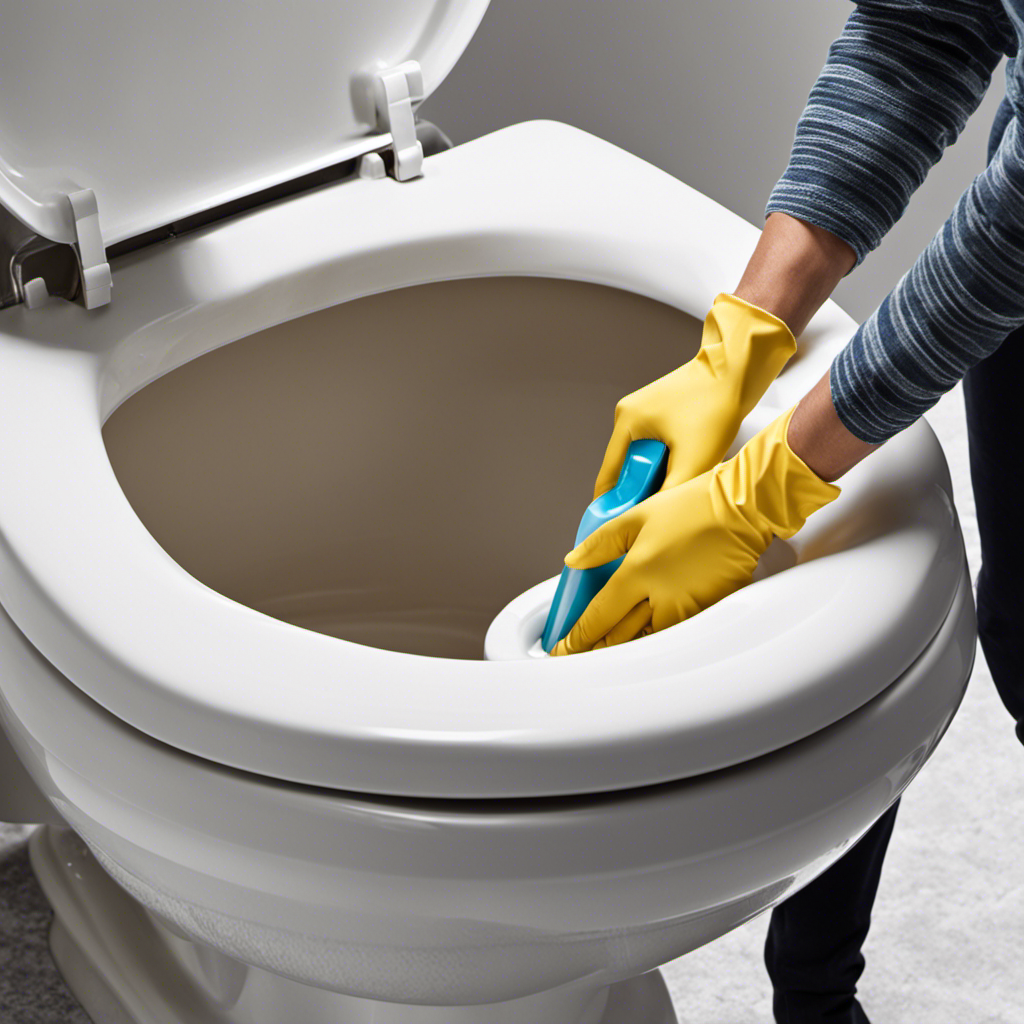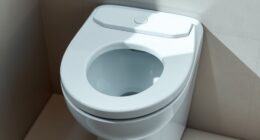Hey there!
Ever experienced the frustration of a toilet leaking only when you flush it? It’s like a leaky faucet that won’t stop dripping, but only when you need it to work properly.
Well, fear not, because in this article, I’m going to walk you through the common causes of this issue, how to identify it, and most importantly, how to fix it.
So, if you’re tired of dealing with that annoying toilet leak, stick around and let’s get it sorted once and for all.
Key Takeaways
- Faulty or worn out flapper valve is a common cause of toilet leaking during flushing.
- Identifying a leaking toilet when flushed can be done by checking for a malfunctioning flapper valve, loose toilet bolts, water pooling around the base, and constant sound of running water.
- To fix a toilet leak during flushing, the flapper valve may need to be replaced, the water level may need to be adjusted, and the water supply should be turned off before removing and installing a new flapper.
- Flapper replacement is necessary to stop a constant running toilet, water trickling into the bowl, and to save water. Water level adjustment is needed to prevent overflow, ensure efficient tank refill, and find the right balance for a powerful flush and water conservation.
Common Causes of Toilet Leaking During Flush
One of the most common causes of a toilet leaking during a flush is a faulty flapper valve. The flapper valve is responsible for sealing the tank and preventing water from continuously flowing into the bowl. Over time, the flapper valve can become worn out or misaligned, resulting in leaks.
To prevent toilet leaks, it is important to regularly inspect and maintain the flapper valve. Check for any signs of damage or deterioration, such as cracks or warping. If necessary, replace the flapper valve with a new one. Additionally, ensure that the flapper valve is properly aligned and seated in the tank to create a tight seal.
By addressing this common toilet plumbing issue, you can avoid leaks and maintain a functioning toilet.
Now, let’s move on to how to identify a leaking toilet when flushed.
How to Identify a Leaking Toilet When Flushed
When it comes to identifying a leaking toilet during flush, there are a few key points to consider.
First, a flapper valve malfunction can often be the culprit. This valve is responsible for sealing the water in the tank and releasing it into the bowl, so if it’s not working properly, water can leak out.
Second, loose toilet bolts can also lead to leaks during flushing. If these bolts are not securely tightened, water can escape around the base of the toilet.
Flapper Valve Malfunction
The toilet’s leaking issue may be due to a malfunctioning flapper valve. The flapper valve is a crucial component of the toilet tank that controls the water flow during flushing. If it is not functioning properly, water can continuously leak into the toilet bowl, causing the toilet to run and wasting water.
To fix this issue, you can try replacing the flapper valve. First, turn off the water supply to the toilet. Then, remove the old flapper valve by disconnecting it from the flush valve assembly. Install the new flapper valve by attaching it to the flush valve assembly.
Loose Toilet Bolts
Check if your toilet bolts are loose as this can cause a wobbly toilet and potential leaks. To determine if the bolts are loose, grab a wrench and gently try to move them. If they move easily, they need to be tightened. Tightening loose nuts is a simple and effective solution to prevent leaks. Here’s a helpful table to guide you through the process:
| Step | Action |
|---|---|
| 1 | Turn off the water supply to the toilet. |
| 2 | Remove the caps covering the bolts. |
| 3 | Use a wrench to tighten the nuts, alternating between each side. |
| 4 | Ensure the toilet is level by checking with a level tool. |
| 5 | Replace the caps and turn on the water supply. |
Cracked Toilet Bowl
Now, let’s address how to fix a cracked toilet bowl.
A cracked toilet bowl can lead to leaks and potential water damage if not addressed promptly. To begin, it is important to detect the toilet leak. Look for any signs of water pooling around the base of the toilet or a constant sound of running water.
Once the leak is confirmed, it’s time to proceed with the toilet bowl repair. First, turn off the water supply to the toilet. Next, drain the toilet bowl by flushing and removing any remaining water.
Now, carefully remove the cracked toilet bowl and replace it with a new one. Ensure a proper seal by using a wax ring and securing the bolts tightly.
With these steps completed, we can move on to fixing a toilet leak during flushing.
Steps to Fix a Toilet Leak During Flushing
When it comes to fixing a toilet leak during flushing, there are two key points to consider: flapper replacement and water level adjustment.
If you notice that your toilet is continuously running or you hear a hissing sound after flushing, it may indicate that the flapper is worn out and needs to be replaced.
Additionally, if the water level in the toilet bowl is too high or too low, it can lead to a leak and should be adjusted accordingly.
Flapper Replacement Necessary
To fix a leaking toilet when flushed only, you’ll need to replace the flapper. The flapper is a rubber valve that sits at the bottom of the toilet tank and controls the flow of water into the bowl. Over time, the flapper can wear out and become inefficient, leading to leaks during flushing.
Signs of a worn-out flapper include a constant running toilet, water trickling into the bowl, or a toilet that takes longer to refill after flushing.
Replacing the flapper has several benefits, including stopping the leak and saving water. A leaking toilet can waste hundreds of gallons of water per day, leading to higher water bills and environmental impact. By replacing the flapper, you can prevent this unnecessary waste and reduce your water consumption.
To replace the flapper, follow these steps:
- Turn off the water supply to the toilet.
- Flush the toilet to drain the tank.
- Remove the old flapper by disconnecting it from the chain and unscrewing any attachments.
- Install the new flapper by attaching it to the chain and securing any attachments.
Water Level Adjustment Needed?
If you notice the water level in your tank is too high or too low, you may need to adjust it. Proper water level in the toilet tank is crucial for the toilet to function correctly. If the water level is too high, it can cause the water to overflow into the toilet bowl, wasting water and potentially causing damage. On the other hand, if the water level is too low, it may not provide enough water pressure for a proper flush. To adjust the water level, you can simply adjust the float valve or float ball in the tank. By turning the screw or adjusting the float arm, you can raise or lower the water level to the desired height. It’s important to find the right balance to ensure efficient toilet tank refill and prevent any potential issues.
| Pros | Cons |
|---|---|
| Proper water pressure for a powerful flush | Prevents wastage of water |
| Prevents overflow and potential damage | Ensures efficient toilet tank refill |
| Saves money on water bills | Promotes proper toilet function |
| Easy adjustment with simple tools | Maintains a clean and functioning toilet |
Signs of a Faulty Flush Valve in a Leaking Toilet
You can easily identify a faulty flush valve in a leaking toilet by checking for water continuously running into the bowl. If you suspect a faulty flush valve, here are some signs to look out for:
- Water continuously running into the bowl
- The toilet tank not filling properly
- A weak or incomplete flush
- Water leaking from the base of the toilet
If you notice any of these signs, it’s important to address the issue promptly to prevent further damage and water wastage.
To repair a faulty flush valve, you can try tightening the bolts or replacing the flapper valve. If these solutions don’t work, it may be best to call a professional plumber for assistance.
Understanding the Role of the Fill Valve in Toilet Leaks During Flush
Understanding how the fill valve operates is essential in diagnosing and resolving toilet leaks during a flush. The fill valve is responsible for refilling the tank after each flush. When it malfunctions, it can cause water to continuously leak into the bowl, resulting in a wasteful and costly problem.
To fix this issue, a fill valve replacement may be necessary. This involves shutting off the water supply, draining the tank, removing the old fill valve, and installing a new one. It is important to follow the manufacturer’s instructions and ensure a proper seal to prevent any future leaks.
Additionally, if the toilet flange is damaged or loose, it can also cause leaks during a flush. In that case, a toilet flange repair should be done to secure the toilet and create a watertight seal.
With a functioning fill valve and a properly sealed flange, you can prevent leaks and maintain a properly functioning toilet.
Now, let’s move on to troubleshooting a leaking toilet flapper during a flush.
Troubleshooting a Leaking Toilet Flapper During Flush
Now let’s explore how to troubleshoot a leaking toilet flapper during a flush. If you’re experiencing a toilet leak only when you flush, it’s likely that the flapper is the culprit. Here are some steps to help you troubleshoot and fix the issue:
- Check the flapper for any visible signs of wear or damage.
- Ensure that the flapper is properly aligned with the flush valve.
- Adjust the chain length to ensure proper sealing of the flapper.
- Clean the flapper and the flush valve to remove any debris or mineral deposits.
If these troubleshooting steps don’t solve the problem, it may be necessary to replace the flapper. Remember to turn off the water supply before removing the old flapper and installing the new one.
Following these steps should help you resolve the issue of a leaking toilet flapper and ensure a properly functioning toilet.
Preventive Maintenance Tips to Avoid Toilet Leaks When Flushed
Let’s explore some preventive maintenance tips to avoid toilet leaks when flushing.
Toilet leaks can be a hassle to deal with, but with proper maintenance, they can be easily prevented.
One common cause of toilet leaks is a faulty flapper. To prevent this, regularly check the flapper for any signs of wear or damage and replace it if necessary.
Another common cause is a loose or worn out fill valve. Ensure that the fill valve is tight and functioning properly.
Additionally, check the water supply line for any leaks or cracks.
It’s also important to avoid flushing large amounts of toilet paper or non-flushable items, as they can clog the toilet and cause leaks.
Conclusion
In conclusion, dealing with a toilet leak during flushing can be frustrating and inconvenient. However, by identifying the cause and following the necessary steps, you can easily fix the issue.
Whether it’s a faulty flush valve, a malfunctioning fill valve, or a leaking toilet flapper, there are solutions available. By taking preventive maintenance measures, such as regular inspections and cleaning, you can avoid future toilet leaks.
So, why let a leaking toilet ruin your day when you have the power to fix it?










